Article
Book Review: Blue Latitudes, and How the Maritime World Changed the South Seas Forever
Author(s):
It's the third and final part of analyzing the book, Blue Latitudes, Boldly Going Where Captain Cook Has Gone Before, and how it applies to modern day.
We were talking about the narrative nonfiction book Blue Latitudes, Boldly Going Where Captain Cook Has Gone Before, published by Picador Henry Holt and Company, New York in 2002 (see “Book Review: Blue Latitudes, and How the World Changed Hawaii”). It became a New York Times bestseller. Other books covering the same late-18th century-time frame also explore the discovery of Australia. We will come back to them shortly, but let’s consider for a moment how today’s South Seas islands differ from what James Cook saw.
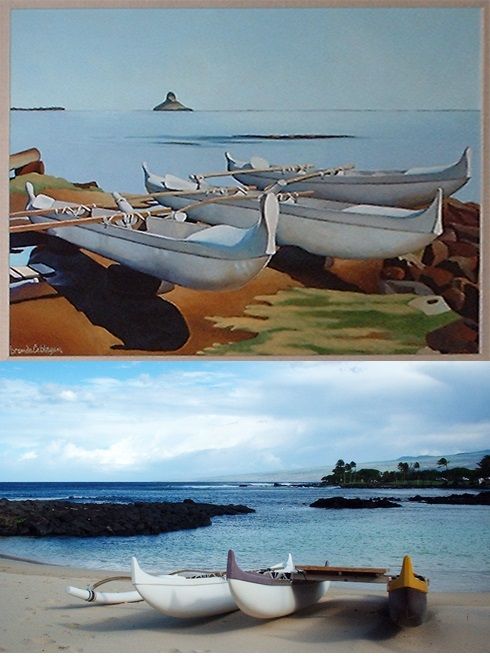
Tourists can appreciate much of what Cook saw when he came again to what he had named the Sandwich Islands (after the British cavalry officer who achieved more fame for creating his eponymous sandwich than he achieved in the Crimean War). Today, hanging from walls in luxury Hawaiian megaresorts or in upscale art galleries, paintings by prominent contemporary artists, like Brenda Cablayan, show modern versions of Cook’s excursions. One such painting shows the Hawaiian outrigger canoes Cook’s lieutenant, James King, wrote about when they arrived at the largest of those islands, the ones “natives called O’why’he.” Cook sent his master, William Bligh (later of HMS Bounty fame), “to probe a wide bay…as a fleet of a thousand canoes swarmed around the ships…and hundreds were swimming around the Ships [sic] like shoals of fish.” King thought the men in the canoes—tawny-skinned, tattooed, and muscular—most closely resembled Maori, who dwelled 5,000 miles to the south. Cook wrote, “’How shall we account for this Nation spreading itself so far over this Vast Ocean?’” That is still a question entertained by today’s anthropologists.
The story of Hawaiian outrigger canoes is indeed the story of Hawaiian history, but most tourists are on vacation and not likely to have history books in their beach bags. Yet sensitive guests will notice how pleased their hosts are when visitors show they know how Kamehameha the Great united the Hawaiian Islands. He did it so forcibly by sea that, in 1810, Kaumualii, the king of Kauai, peacefully surrendered his island to avoid further bloodshed. But Hawaiian hosts hope we know even more: How their islands became our 50th state particularly this 1893 story here.
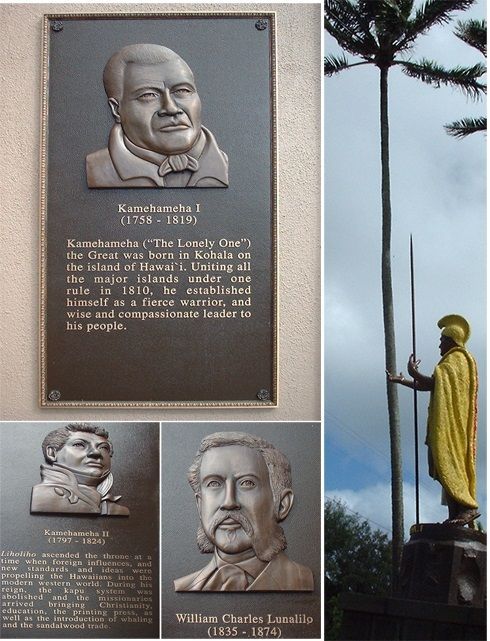
Tourists, especially snorkelers, will notice and appreciate the modern versions of the outrigger canoes, but this is evidently how Kamehameha and his army traveled to each island to subject it to his rule.
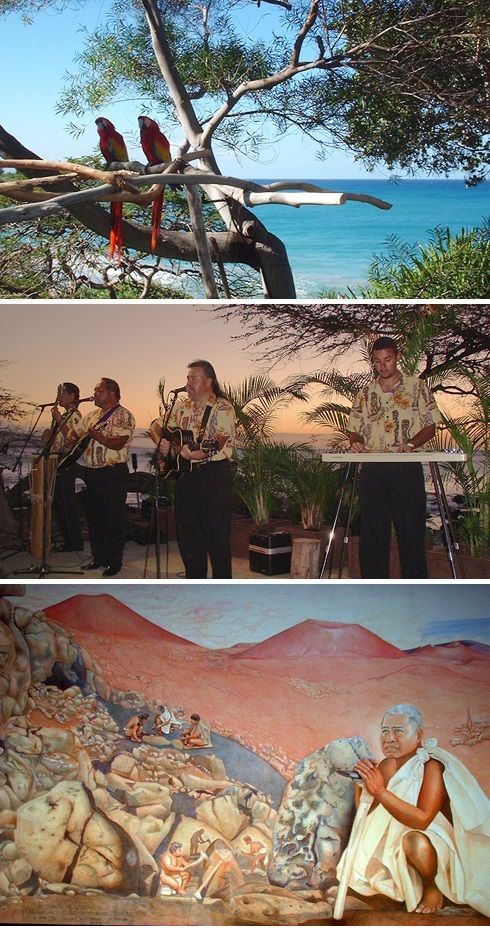
Today’s visitors find serenity. Tropical birds enjoy their island, too, as do tourists listening to their resort’s welcome but what Captain Cook confronted two centuries ago were Hawaiians who sensed their culture was about to be invaded.
Sensitive visitors with the curiosity of travelers and the pull of history might gaze on murals and statues in the megaresorts. When sailing ships arrived, they brought infections natives had not seen before—nor had any immunity to. Blue Latitudes explains how Cook handled this: His ship’s log showed he was charmed by Hawaii, “with the flowers sending forth the most fragrant smell I had anywhere met with…the sweet potatoes the largest I had ever seen…taro root the best I ever tasted.” Yet he was not unaware how his crew enthused about the Island women. One sailor wrote, “As fine Girls as any we had seen in the south [sic] Sea Islands…with no more Sense of Modesty than the Otaheite women [an island in French Polynesia where women were indifferent to clothing], who cannot be said to have any.”
Horwitz said, “Cook forbade his men from having relations with women, lest they bring ‘the venereal’ to those untouched islands. He dispensed twenty-four lashes to an infected sailor who had disobeyed, but this proved an inadequate deterrent.”
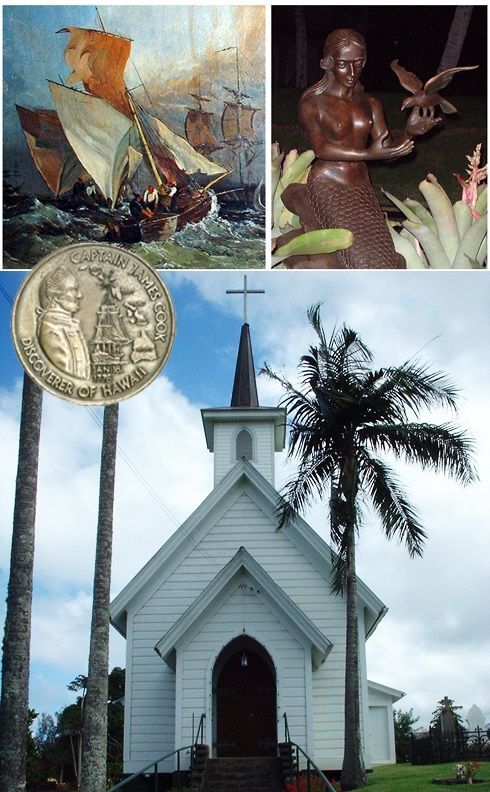
Local guides claim Hawaii’s biggest problems were caused by the arrival of the maritime explorers—which led to infections and ultimately colonial subjection—and the arrival of the missionaries which led to destruction of Hawaiian culture and its own religion.
Today, Hawaii is a melting pot of many peoples’ cultures and religions at a time when Mainland America struggles to share those values. Still, on the island of Lanai, visitors can see the resorts embracing the old even as they welcome the new. Buddhists are welcome here and Lanai children charm visitors. On Maui, a young tourist walks unafraid past symbolic carvings. And on a Moorea town wall in Tahiti, a mural shows the simplicity and innocence of an earlier time.
Captain Cook did more than discover unknown islands in the South Seas. He determined that, although there was no mysterious continent in the Southern Hemisphere to balance the weight of Europe in the North, there were other large islands and one he, strangely, called New South Wales. This was strange, Horwitz said, because the outback of this new country receives less rain in a year than South Wales does in a week.
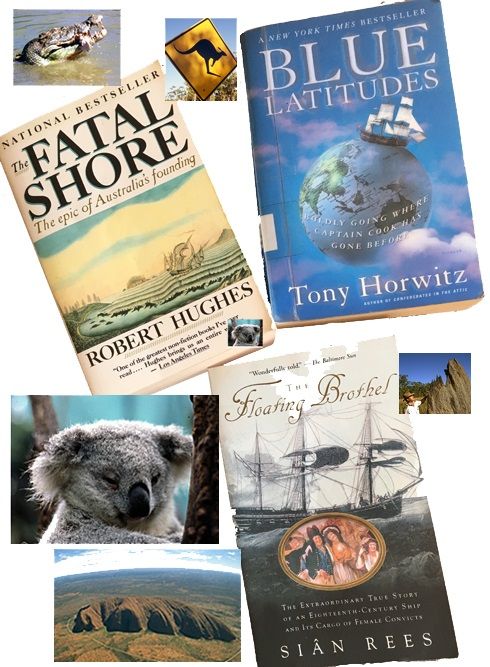
Blue Latitudes is both a historic nonfiction and a droll tongue-in-cheek that shows the fun it was to reproduce Cook’s exploits an easier way (by air) for two somewhat care-free young people at an easier time (the 21st century). Horwitz and his irreverent buddy, Roger Williamson, did not pursue Cook into Australia—odd, as both had lived a significant time in Sydney and one of the dramatic episodes in Cook’s life occurred when he impacted his ship on the Great Barrier Reef and barely escaped the destruction with his life. Why would Cook ignore the maritime maps? Well, there weren’t any; Cook was on a meticulous mission to draw those maps. For readers of historic nonfiction interested in how Australia started as an English convict colony two books offer entertaining material, The Fatal Shore by Robert Hughes, which surely qualifies for what is now called narrative nonfiction, a fantastic read. And The Floating Brothel by Sian Rees, her first book, covers how English jails were emptied of women as the new colony needed to expand. When I told a daughter I was reading this latter book, she wrote me, “How Salacious!” But it isn’t, I hastened to reassure her; it is a meticulously researched (to a fault) historical documents highlighting how little crime a woman had to carry out in order to be imprisoned in England at the tail end of the 18th century—and ultimately sent on “transportation” for seven or 14 years to this new world of New South Wales.
Hughes’ book can be previewed here and the brief look may send readers to their public library for the full copy. Robert Hughes, author of The Fatal Shore, was an erudite Australian art critic once described by The New York Times as "the most famous art critic in the world."
*All photography by the authors unless otherwise noted
The Andersons, who live in San Diego, are the resident travel & cruise columnists for Physician's Money Digest. Nancy is a former nursing educator, Eric a retired MD. The one-time president of the NH Academy of Family Physicians, Eric is the only physician in the Society of American Travel Writers. He has also written five books, the last called The Man Who Cried Orange: Stories from a Doctor's Life.




